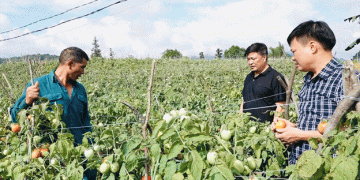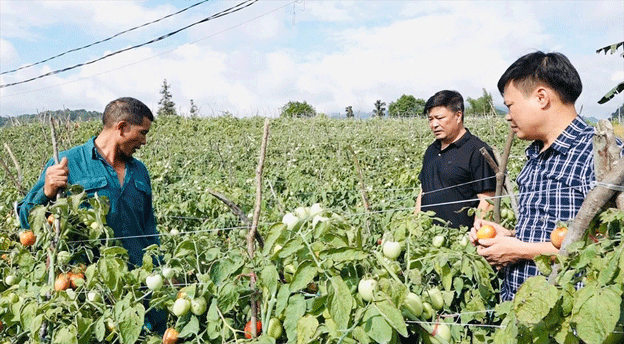Successful Agricultural Transformation in Ha Giang Province
Ha Giang Province in northern Vietnam has recently achieved notable success with its agricultural transformation project aimed at converting inefficient corn fields into high-value crop production. This initiative, running from 2023 to 2025, has already demonstrated significant positive impacts, particularly in the mountainous district of Quan Ba.
Key Outcomes of the Crop Transition
Three years ago, Lu Thi Mai’s family became one of the first households in Dong Tinh village, Quyết Tiến commune, Quan Ba district, to embrace this transformation. They replaced their unproductive corn fields with high-value vegetables, including tomatoes, cucumbers, and cabbage. With 7,000 square meters dedicated to these crops, the family reported an annual income of approximately 650 million VND, with a net profit of around 350 million VND after expenses.
“Achieving these results required not only the application of modern agricultural techniques but also forming partnerships with businesses to ensure a stable market for our produce,” said Lu Thi Mai.
Market Integration and Strategic Partnerships
Triệu Văn Hoà, a local agricultural product procurement unit, highlighted the importance of market integration in the project’s success. “We have signed agreements to purchase cucumbers from farmers in Quyết Tiến and Tùng Vài communes. Our role includes providing seeds, technical support, and market pricing to ensure quality and profitability,” he explained.
For the Spring-Summer 2024 season alone, Quan Ba district has implemented three market linkage models, covering 335 hectares and involving 620 households. These models have been particularly successful:
- Cucumbers: 150 hectares, yielding 35 tons per hectare, with market prices ranging from 5,000 to 14,500 VND/kg, generating a total value of 26 billion VND.
- Tomatoes: 162 hectares, yielding 35 tons per hectare, with prices between 5,000 and 19,000 VND/kg, leading to a total value of 28 billion VND.
- Chilies: 22.8 hectares, with a yield of 20 tons per hectare, and prices typically above 17,000 VND/kg, contributing 7.7 billion VND in total value.
Additionally, approximately 11,300 tons of vegetables and fruits from Quan Ba are supplied to markets in Hanoi, Bắc Giang, Bắc Ninh, Nam Định, and even exported to neighboring countries such as Laos, Cambodia, and Thailand. The total value of these agricultural linkages amounts to about 62.3 billion VND.
Challenges and Future Directions
Phạm Ngọc Pha, Vice Chairman of Quan Ba District People’s Committee, emphasized the region’s adaptability in market openness and the application of safe, efficient production methods. Despite these successes, challenges remain, including uneven awareness among local farmers and the predominance of small-scale farming, which complicates the commercialization of agricultural products.
To address these issues, the district plans to further research and implement region-specific solutions, facilitating a gradual shift from traditional agriculture to a more commercialized approach. This includes enhancing agricultural education and fostering better market integration.
Ha Giang’s project to transition from low-yield corn cultivation to high-value crops has yielded impressive results, boosting incomes and productivity while setting an example for similar initiatives. As the province continues to refine its strategies and overcome challenges, it promises to offer valuable lessons for other regions aiming to enhance agricultural efficiency and market integration.































